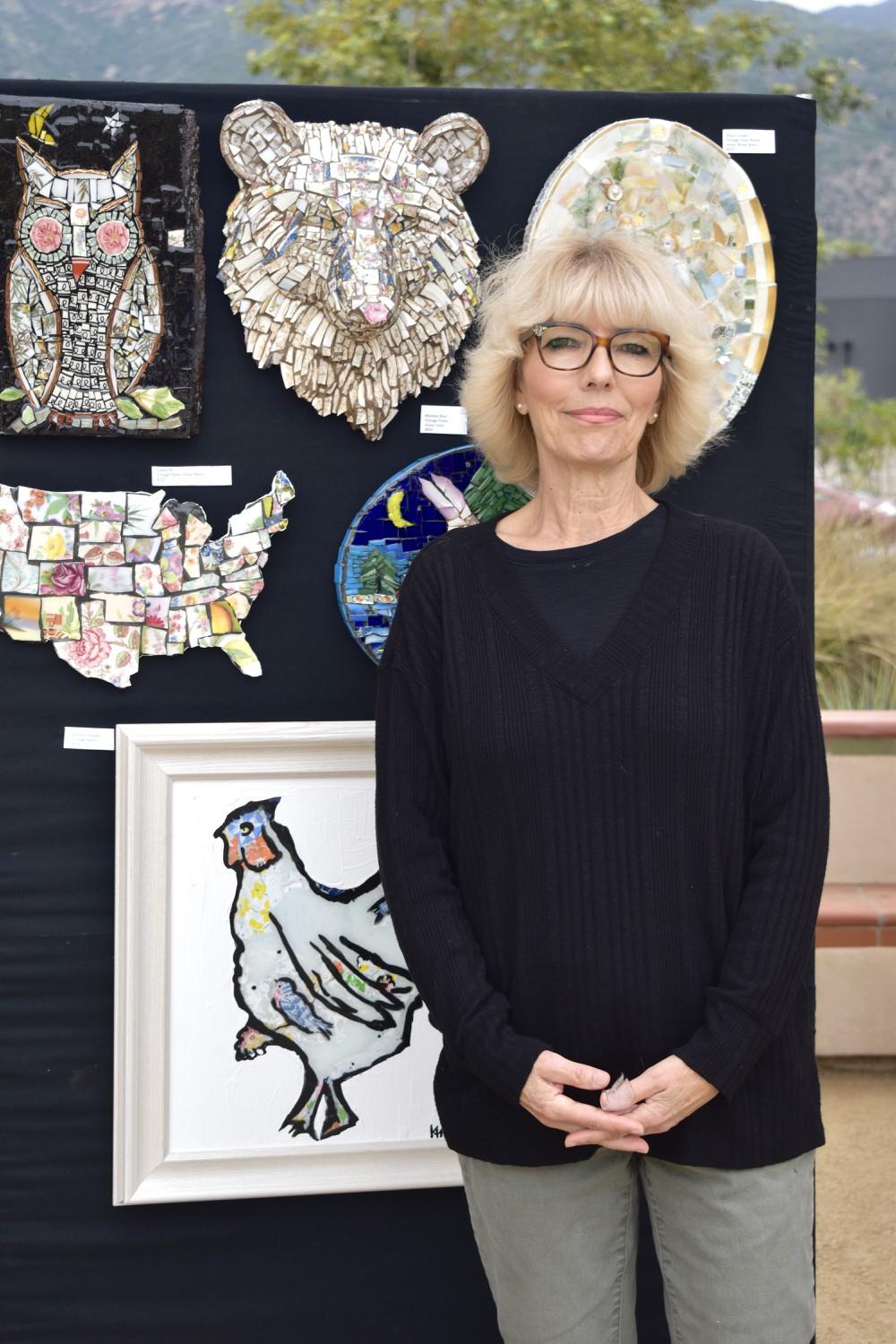
Kim Bennett said she is “passionately obsessed” with the process of creating mosaic collages in a folk art technique called ‘Pique Assiette,’ a French term that roughly translates to “one who eats from other’s plates,” according to Cambridge Dictionary.
After earning her bachelor’s degree in Creative Writing, Bennett moved to California to begin her career as a Hollywood film editor. For the past decade, Bennett said she has devoted her life to her art.
Inspired by her years in the film industry, Bennett said she is always searching for a story to inspire her artwork.
How do you choose what materials you are going to make a piece out of?
“I’ve been collecting plates for 10 to 15 years now. My husband is a wonderful man, and he’s indulged my obsession — collecting, hoarding. I’ve learned that because I hand-cut all of my plates, they have to be flat and not too curved and not too thick. But I really go for color.”
What have you learned since you started creating art?
“I learned to make sure you check that you’re not cutting up a $400 plate, and I did that once. I made this table, and in the center, I put a flower that I cut it out of a plate. Then, I did some research, and I went online, and it was like [from] Sotheby’s [for] $400. Oh my gosh, how could I do that?”
“Another thing that I learned is that you can’t really cut up something that is really, really old. Some of the plates I collected at the very beginning were 1800s. So, in the mosaic community, we have an agreement that we don’t destroy something that’s that old. Now, because I know other mosaic artists, I can even recognize some of the patterns.”
You’re taking this ancient art form, the oldest one you said, but maybe it isn’t always what comes to mind for people when they think of “traditional art.” What is that experience like for you?
“For me, as an artist, making something unique is the value. That there is not anything else like that, especially since we have A.I., and we have even mass-produced oils and all that. I mean for me — and I personally love all art — but there will never be anything like this.”
Bennett started walking around the display holding all of her art and lovingly gestured to each piece as she described them.
“I love combining [time periods]. This piece is from the ’60s and this one from the ’80s, and I love bringing together different times in history in one piece. These flowers I cut out are from the ’20s, and this part is English, and this is from the 1910s. And I love that, at one time, someone ate a meal off of this plate; there was a family that used this plate. And then, for the fabric [I use], like, somebody sewed this quilt. It was 1953, and they used this quilt that used to be a shirt from the ’40s. I just really like the idea that there’s nothing else — there will never be; I couldn’t even make another one because I will never have the exact same materials.”
You said you love using whimsical stories to inspire your art. What would you say is your inspiration for some of the more whimsical pieces?
“The innocence of childhood, like when a marshmallow — toasting a marshmallow was like winning the lottery. When that was all that mattered, being present and being in nature. I love nature.”
She stroked a hand over a piece of a woman with flowers for eyes and what looked like a jumble of costume jewelry for hair.
“I love her energy. I sold one similar to her, so I made a new one. They usually take me about a week or so, but these are just very labor-intensive. I mean, just think about all the women who wore those necklaces and when. Some woman wore these necklaces in the ’50s and ’60s, and now, they have all come together to create this. And who would have thought?”
_______________________________________________
Follow the Graphic on Twitter: @PeppGraphic
Contact Marley Penagos via email: marley.penagos@pepperdine.edu

